Brown Brothers Pottery, Huntington
Edward Lange (1846-1912). Brown Brothers Huntington Pottery, 1880. Watercolor, gouache, India ink on paper, 11.125 x 17.625 in. (unframed); 9.75 x 16.125 in. (framed). Preservation Long Island purchase, Conserved with support from the NYSCA/GHHN Conservation Treatment Grant Program, 1984.18
Lange's painting of the Brown Brothers Pottery in Huntington is perhaps his most iconic today. A pottery stood on this site for nearly a century between 1805 and 1902. In 1880, when Lange produced this picture, George Brown owned the business and employed his brother Thomas as a potter. For over forty years, the Brown family supplied beautiful, utilitarian wares to the people of Long Island, New York City, and Connecticut. They produced a number of different forms, including jugs, jars, butter pots, pie dishes, urns, chicken feeders, water kegs, stove pipes, vases, and butter churns. Workers bustling around the site in Lange's painting can be seen moving and packing a number of these forms for distribution.
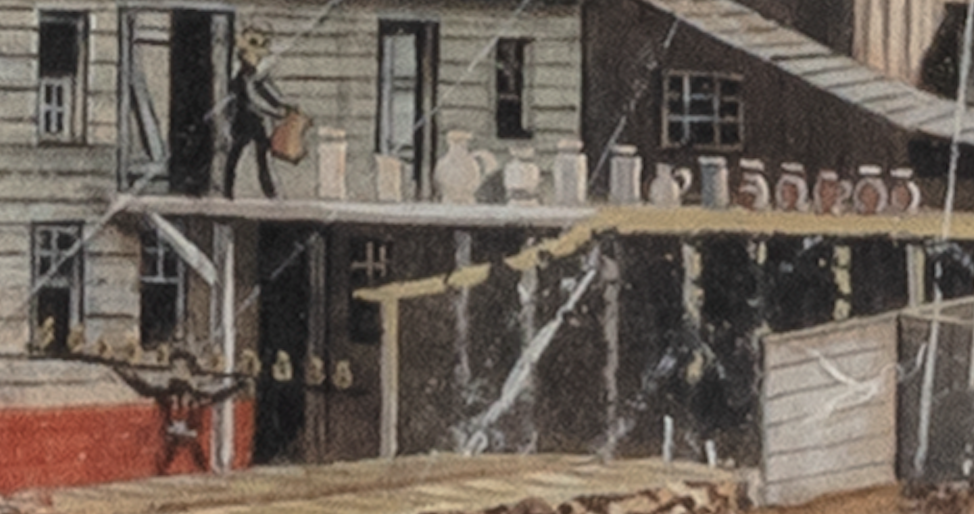
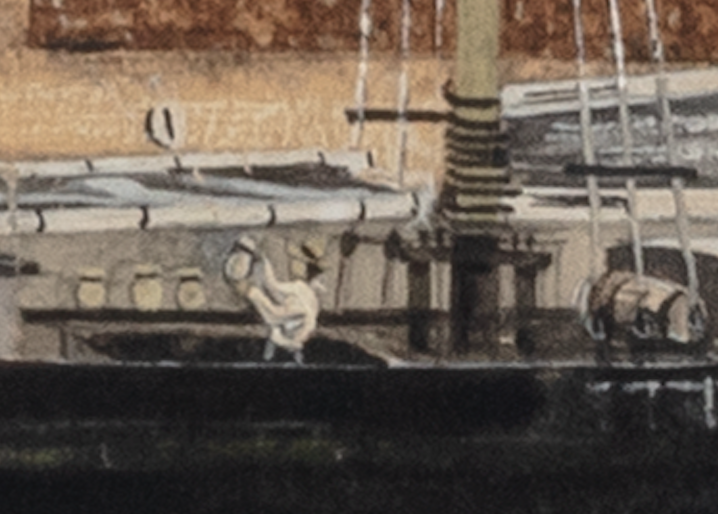
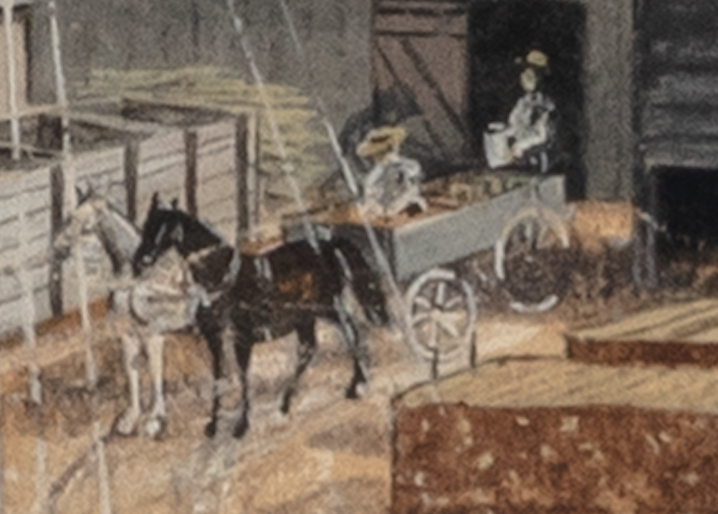
Details, Edward Lange, Brown Brothers Huntington Pottery, 1880
The area surrounding the manufactory was home to good quality clay deposits that produced excellent earthenware pieces. The pottery also imported stoneware clay from Raritan, New Jersey and dark brown slip from Albany, New York. At its height, the Brown Brothers Pottery consumed approximately 300 tons of clay a year, burned through 300 cords of wood, and vaporized 60 baskets of salt in their kilns to create the salt-glazed finish of their stoneware. The colored smoke emitting from the pottery's two chimneys indicates that they manufactured two different kinds of ceramics—white smoke from firing stoneware and black smoke from firing earthenware.
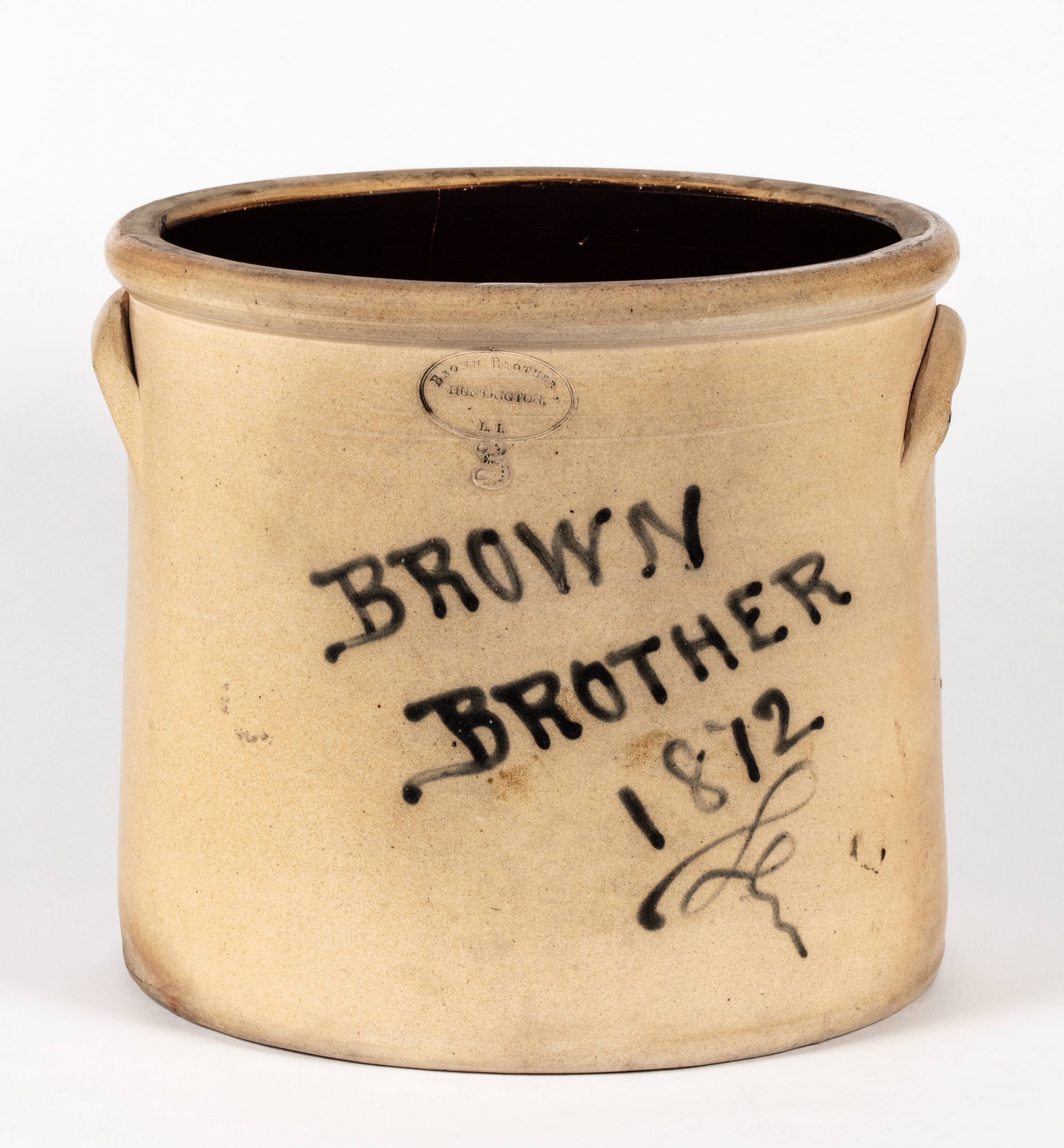
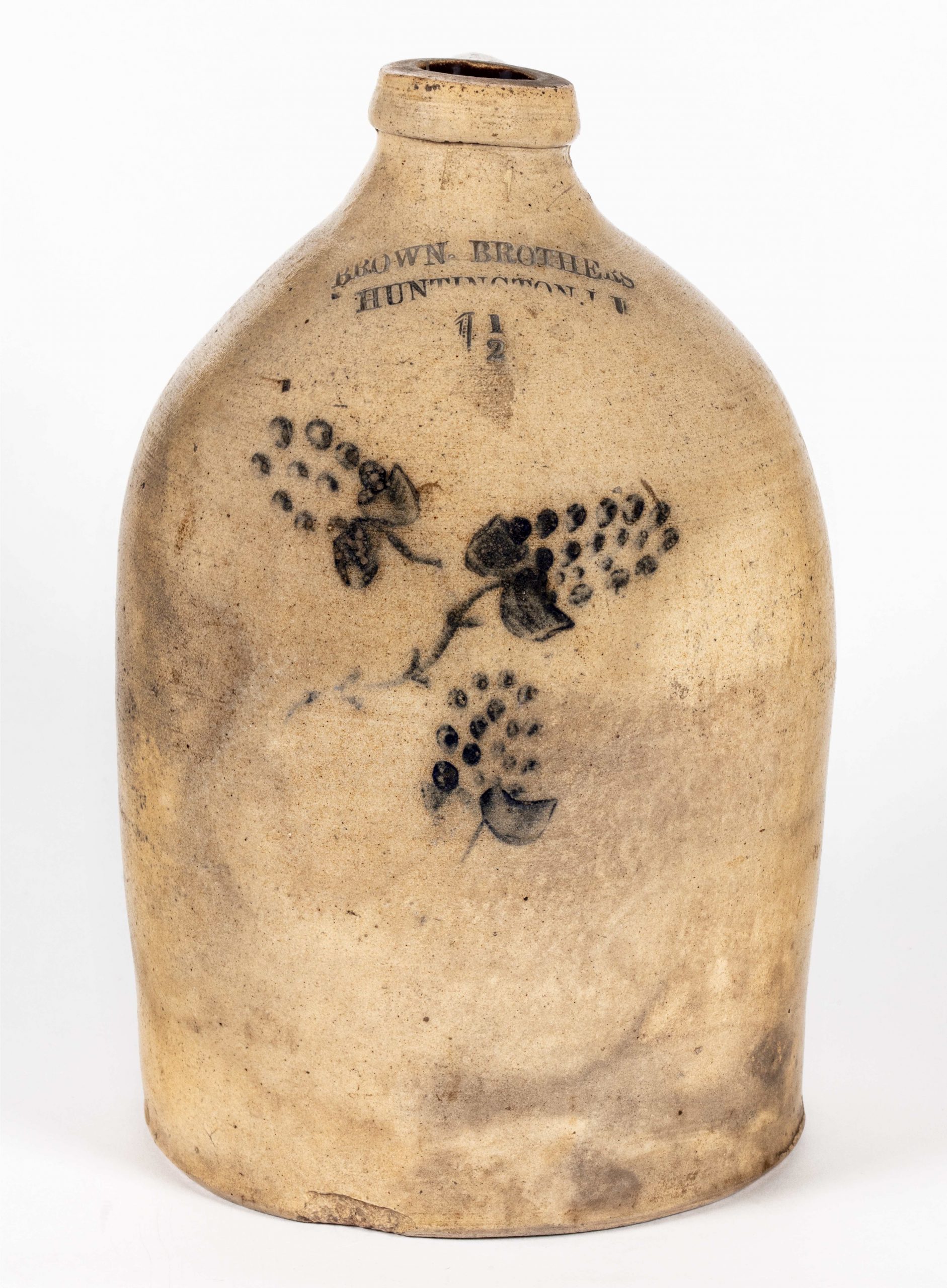
(left) Brown Brothers Pottery, Pot, 1872, Salt-glazed stoneware, cobalt oxide, dark brown slip, Preservation Long Island, 1981.22; (right) Brown Brothers Pottery, Jug, ca. 1863-1870, Salt-glazed stoneware, cobalt oxide, dark brown slip, Preservation Long Island, 1963.27.11
Stoneware, named for its resemblance to real stone after firing, entered a kiln heated between 1200 and 1300 degrees Celsius. These temperatures produced a non-porous surface. The potter decorated this pot and jug with cobalt oxide (noticeably blue in color) and salt-glazed them in the kiln. Their surfaces are glassy, but pitted, not dissimilar to the texture of an orange peel—a product of sodium in the salt reacting with alumina and silica of the clay.
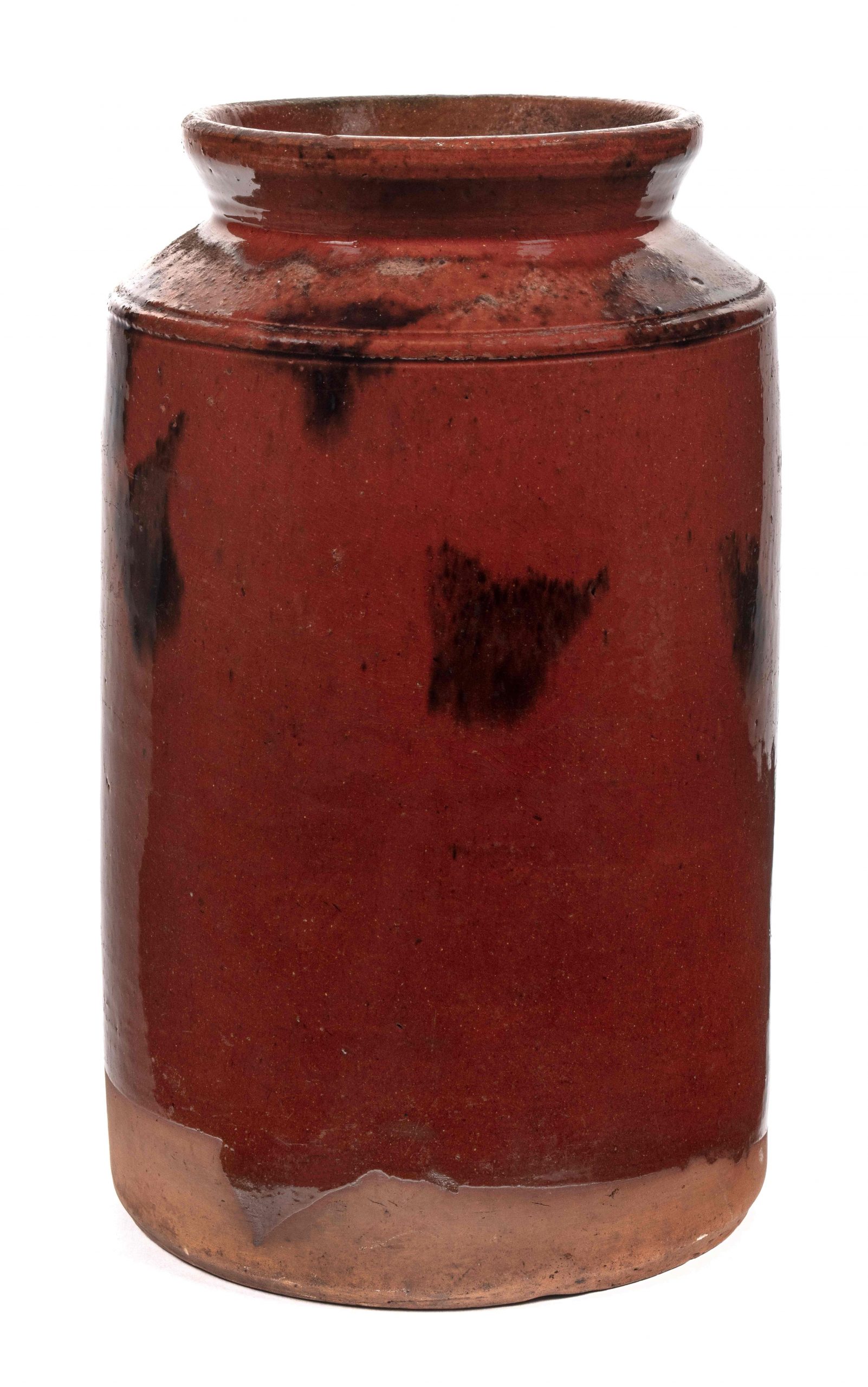
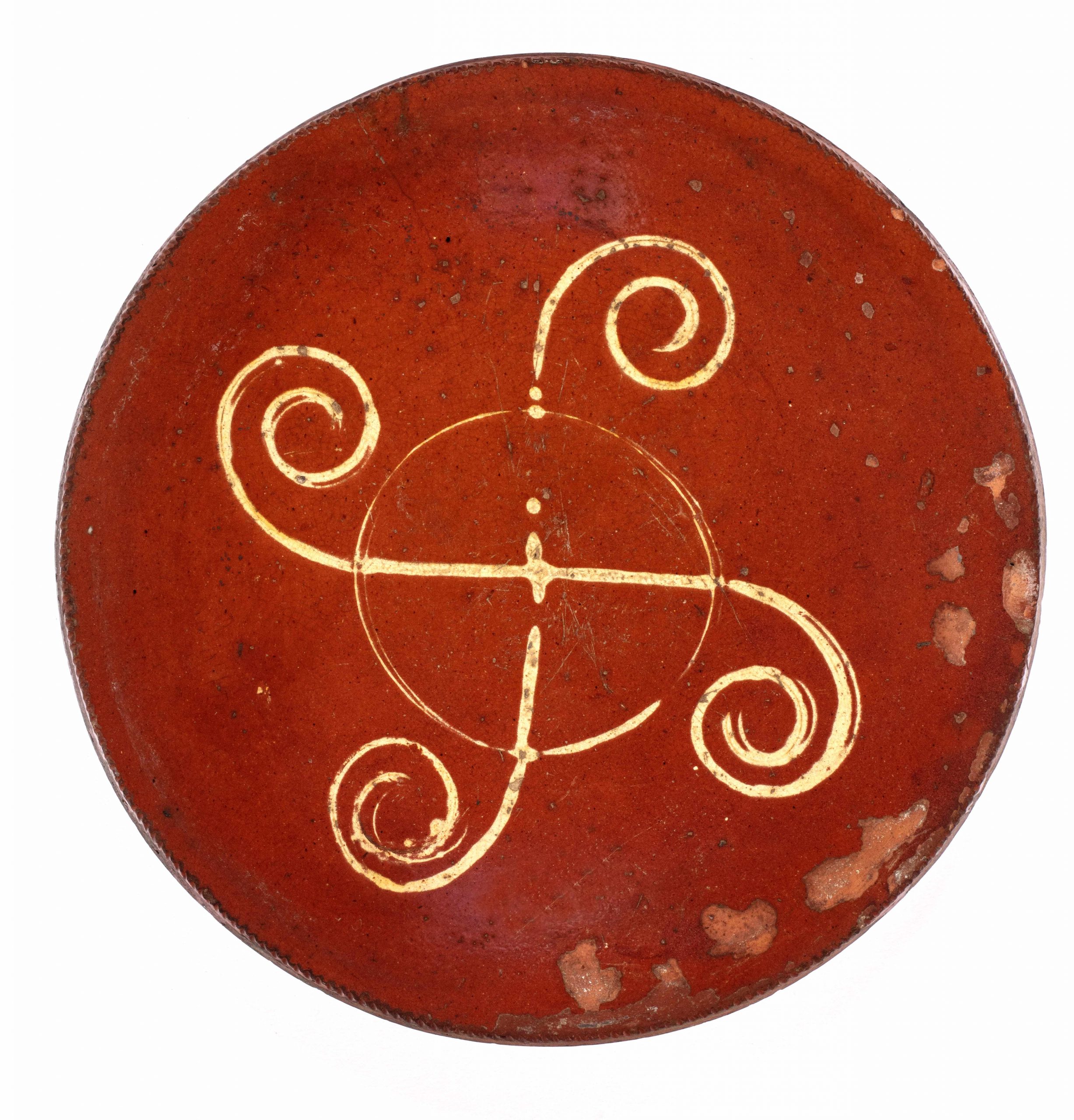
(left) Brown Brothers Pottery, Jar, ca. 1805-1860, Lead-glazed coarse earthenware, manganese oxide, Preservation Long Island, 2004.6; (right) Brown Brothers Pottery, Plate, ca. 1840-1885, Lead-glazed coarse earthenware, Cream-colored slip, Preservation Long Island, 1980.1
Commonly referred to as redware, the earthenware pieces above were fired at a lower temperature than stoneware—between 800 and 1100 degrees Celsius. Earthenware is softer than other clay bodies and seldomly fully vitrifies into a glassy and impermeable surface. The glossy coating visible on their surfaces is a lead-glaze, applied during the firing process to prevent liquids from leaching into their porous earthenware bodies. These kinds of ceramics were typically used in food preparation and storage. The cream-colored slip decoration on the plate, featuring curvilinear lines and spirals, echoes popular designs of the period for potters on both sides of the Long Island Sound.
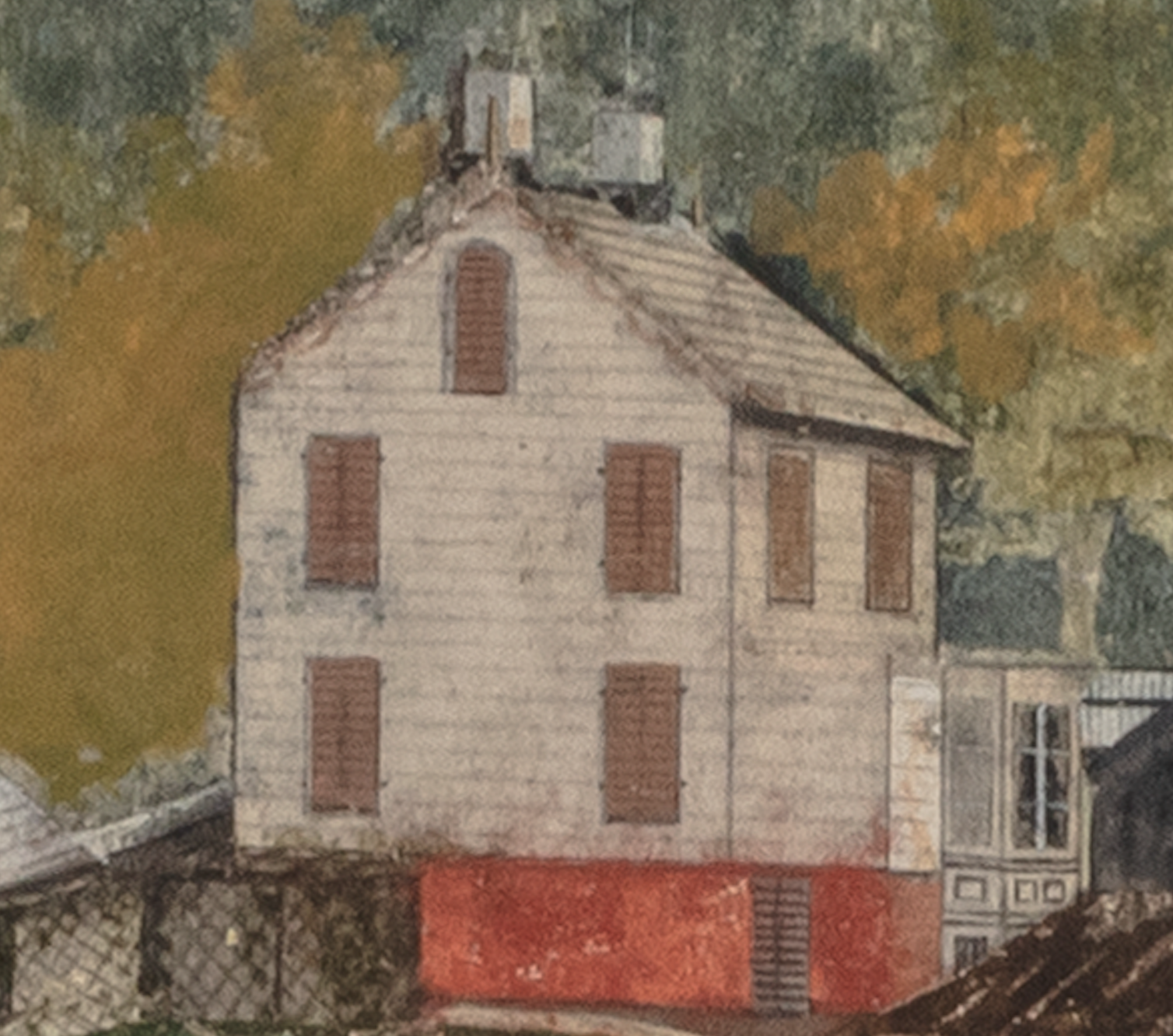 In addition to depicting a fascinating chapter in Long Island's decorative arts history, this painting has also lived quite a life. It was found rolled up in the home of Carrie E. Brown, a granddaughter of one of the owners of the property. The Brown house is visible on the left side of the painting, behind the pottery buildings, and still stands today adjacent to the former pottery site. After this exciting find was accessioned into Preservation Long Island's collection, the painting underwent conservation and continued to reveal new information that informs our knowledge of Huntington's pottery history.
In addition to depicting a fascinating chapter in Long Island's decorative arts history, this painting has also lived quite a life. It was found rolled up in the home of Carrie E. Brown, a granddaughter of one of the owners of the property. The Brown house is visible on the left side of the painting, behind the pottery buildings, and still stands today adjacent to the former pottery site. After this exciting find was accessioned into Preservation Long Island's collection, the painting underwent conservation and continued to reveal new information that informs our knowledge of Huntington's pottery history.


